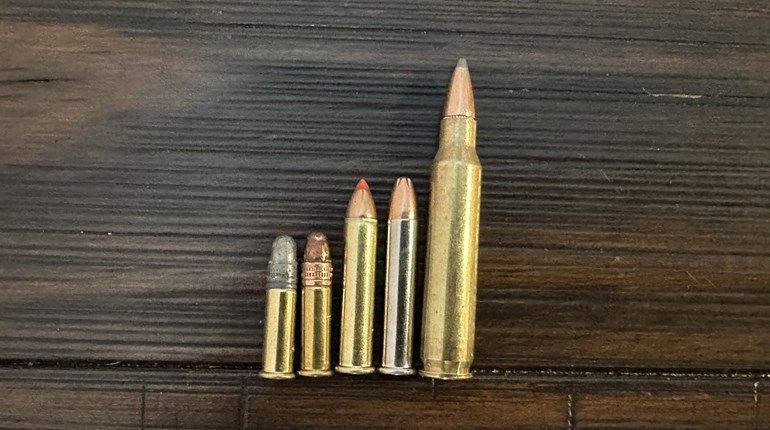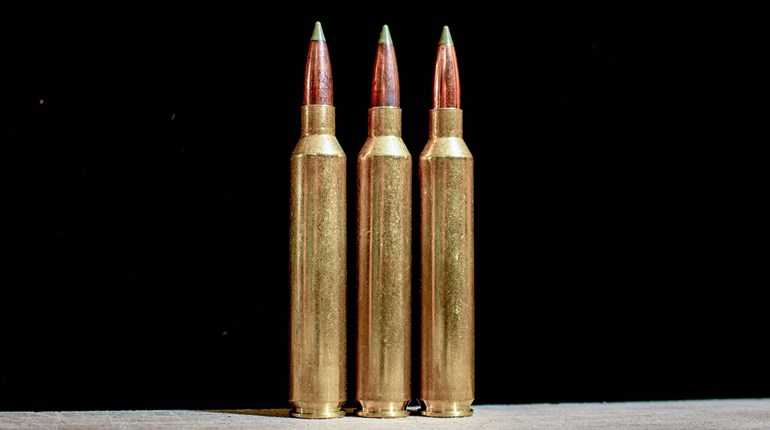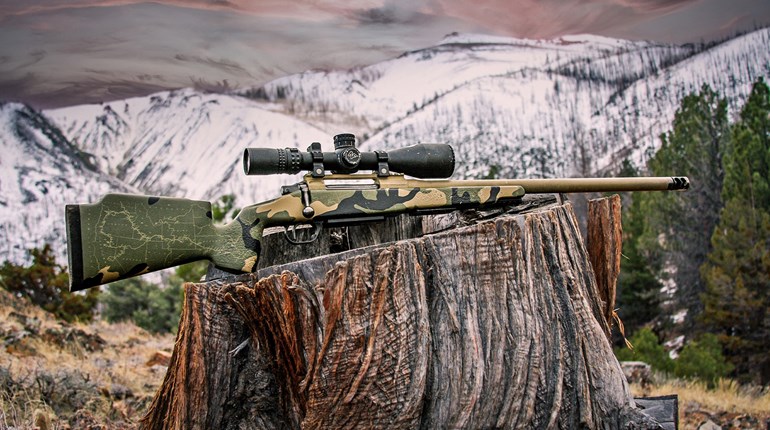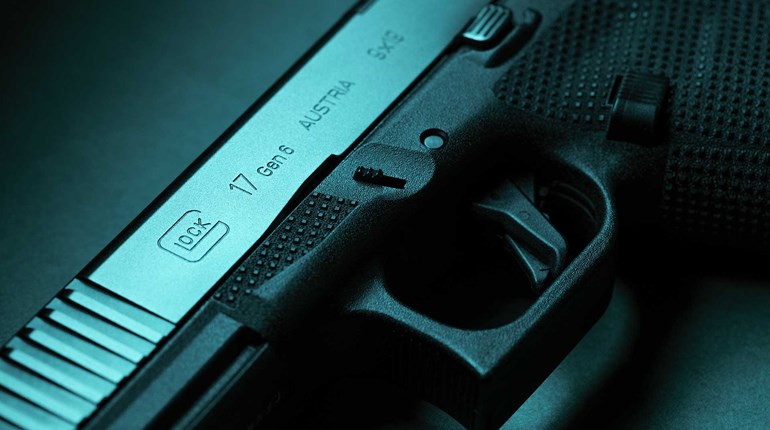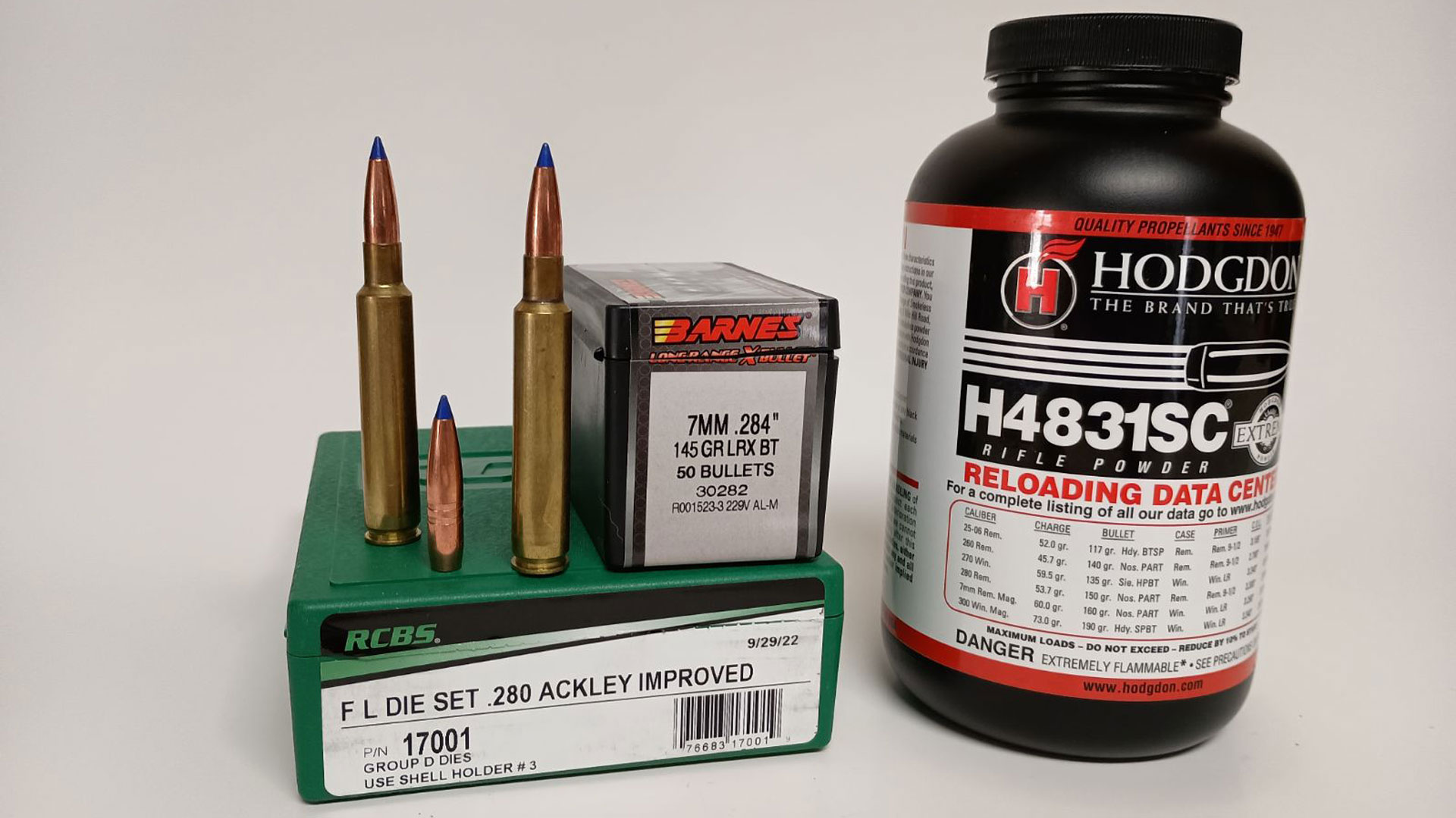
A rash of new 7mm/.284-based cartridges were launched since the turn of the millennium: the 7mm WSM and 7mm SAUM; the .28 Nosler; and now the latest addition, the 7mm PRC. Thus far, this latest caliber shows real promise for sticking around in the long run, perhaps even beating out its slower-twisted counterpart, the 7mm Remington Magnum. But long before any of these 7mm cartridges hit the stage, we had the .280 Ackley Improved; while it comes up a tad ballistically short of the 7mm PRC, it might be the overall better cartridge, especially for hunting purposes. Let’s take a look at the two.
As a handloader, I’ve always been a fan of efficiency. The ratio of grains of powder compared to bullet weight and what velocity bullets can be pushed to, is something I consider when selecting cartridges. This is the primary reason why I advocate for the .280 AI over the 7mm PRC and other big 7mm Mags—how this efficiency translates into real-world application makes it clear most 7mm Mags are overrated. If bore diameter were a tad wider, a larger cartridge—and therefore more powder—would be justifiable. But as it sits, the 7mm for a true magnum-sized case is a little overbore, so unless a rifle is equipped with a longer barrel to get the most from the borderline excessive powder charges (we’ll get into the cons of that a bit later), shooters are basically playing the game of diminishing returns.
Let’s look at this from a reloading perspective to really get our efficiency numbers for reference. Say someone buys a one-pound can—for reference, there are 7,000 grains in a pound—of H4831; said individual can load 126 rounds of .280 AI compared to 110 rounds of 7mm PRC. That’s 16 more rounds of ammo that can be loaded with the same single pound of powder, which, if you’re effective at the range and during hunting season, that’s at least another season’s worth of hunting ammo, if not more.

Using the same powders and same bullet weights, the PRC round only beats the .280 AI by 300 fps at best when using similar powders, and that’s a generous assessment. Take for example that same powder mentioned earlier: H4831. To launch a 175-grain bullet as fast as safely possible, Hodgdon’s website lists a charge of 55.5 grains of powder in the .280 AI; this charge propels the 175-grain bullet to 2,650 fps. Using the same powder, the 7mm PRC propels the same bullet to just over 2,900 fps using 63.3 grains of powder. But it takes roughly eight more grains of powder to do it. In other words, by burning eight more grains of powder, a shooter gains about 250 fps. Converting that to percentages, by burning about 12.5-percent less powder, one only loses about 8.5-percent of total velocity of what the 7mm PRC is running.

With these considerations in mind, where does that put us ballistically in the real world with these two cartridges? Using Hornady’s 175-grain ELD-X bullet, which has a B.C. value of .689 (G1)/.347 (G7), all else being equal (elevation, wind speed/direction, etc.), the 7mm PRC is only four-inches flatter than the .280 AI at 400 yards—or within an MOA – using the same bullet. With that in mind, assuming a given gun shoots one MOA (which is typically the acceptable grouping metric for rifles,) the .280 AI’s extra drop is within the margin of error for the average rifle; it’s also well within the vitals of any big-game animal at that distance. And that’s assuming the shooter does his or her part; for all intents and purposes, the .280 AI and 7mm PRC are within the margin of error for most shooters, especially at 400 yards and farther. Furthermore, that difference in drop can be made up if one switches to a lighter bullet shot a little bit faster out of the .280 AI. One of my personal hunting rifles, a Kimber Hunter 84L chambered in .280 AI, pushes a 145-grain Barnes LRX bullet averaging 3,050 fps. By dropping 30 grains of bullet, I’m matching the PRC’s trajectory to 400 yards.

Energy-wise, both at the muzzle and at the 400-yard mark with that same 175-grain bullet traveling at the previously listed velocities, the 7mm PRC only has about 400 ft.-lbs. more energy than the .280 AI (at 400, the 7mm PRC has 2,200 ft.-lbs. to the .280 AI’s 1,800 ft.-lbs.). I’d argue that anyone concerned about that 400 ft.-lbs. of energy shouldn’t be worried at all, as elk have been taken much greater distances—with much lighter bullets—from the .280 AI.
To prove the point of long-range viability, a fellow gun writer I know personally guided someone take a bull elk at over 800 yards with a 155-grain bullet fired from a Kimber Mountain Ascent 84L rifle chambered in .280 AI. Ethics of shooting distance aside, the shot was ethical when it came to terminal performance—the elk was dispatched quickly and humanely, providing solid destruction of the vitals in the chest. While the shooter had lots of practice, it still proves the point that the .280 AI is fully capable and is no slouch at extreme distances, even on large game animals such as elk.

You might be thinking, “Well, that’s just one example …” and you’d be right. Except it’s hard to shun one solid example when there aren’t too many true apples-to-apples comparisons. Why? Because at the time of this writing, there’s not much data for the 7mm PRC, and there’s a mountain of data available for the .280 AI. Sure .280 AI has been around longer, but the PRC is also mostly attuned to long-range shooting applications, meaning the only data one is bound to find for the 7mm PRC all involve heavy-for-caliber bullets. And while that’s not necessarily a bad thing, it’s worth noting shooters are limited not only in bullet selection as far as bullet type and powders, but also in recoil mitigation. Lighter bullets produce less recoil, so if the only projectile options are heavy bullets, far less time can be spent practicing, and it won’t be an ideal cartridge to load down for new shooters since it literally can’t be done with the current data available. For reference, at the time of this writing, the lightest bullet that can be fired in the 7mm PRC per Hodgdon is a 150-grain bullet. Nosler lists only a single bullet weighing 185 grains for its 7mm PRC data, and don’t even worry about checking Barnes reloading data—the PRC currently isn’t even listed as an option to load Barnes Bullets. But for the .280 AI? Nosler lists a slew of bullets ranging from 120 grains up to that same 185-grain bullet (which can be propelled by a hot charge of 54.5 grains of N160 to reach 2,680 fps from a 26-inch barrel). But Barnes has plenty of various bullet/powder combinations on its website for .280 AI. It’s also where I got the data for my Kimber 84L rifle using the LRX bullet.

Finally, a shooter can get a lighter rifle if it’s chambered in a .280 AI, as the 7mm PRC takes a bigger action and could use a longer barrel to burn the extra powder not needed in the .280 AI. Plus, that same rifle will have better barrel life. The speed thing was cool at one point, but now it’s almost turned into a race to the bottom. If your drop at 400 yards is only a couple inches difference, and your energy is still adequate to penetrate an elk hide through and through, shooter error will have more influence on POI and group than speed will at that point. And more people develop bad habits as recoil increases, exacerbating that shooter error with the average shooter.
Even though the cartridge was created in the 1960s (and other variants of the .30-06 Springfield case were crafted before P.O. Ackley introduced his variant), the stalwart .280 AI can hold its own against the PRC, and has several benefits over the PRC that merit every hunter’s consideration. Benefits that should make shooters ask themselves, “Is newer really better?”












